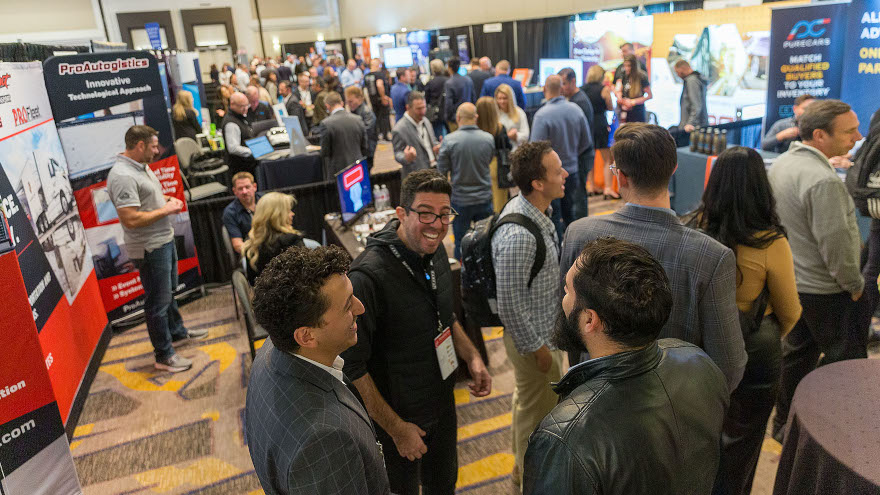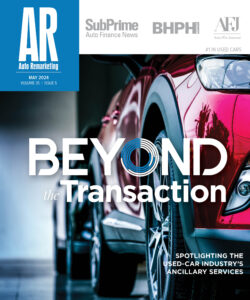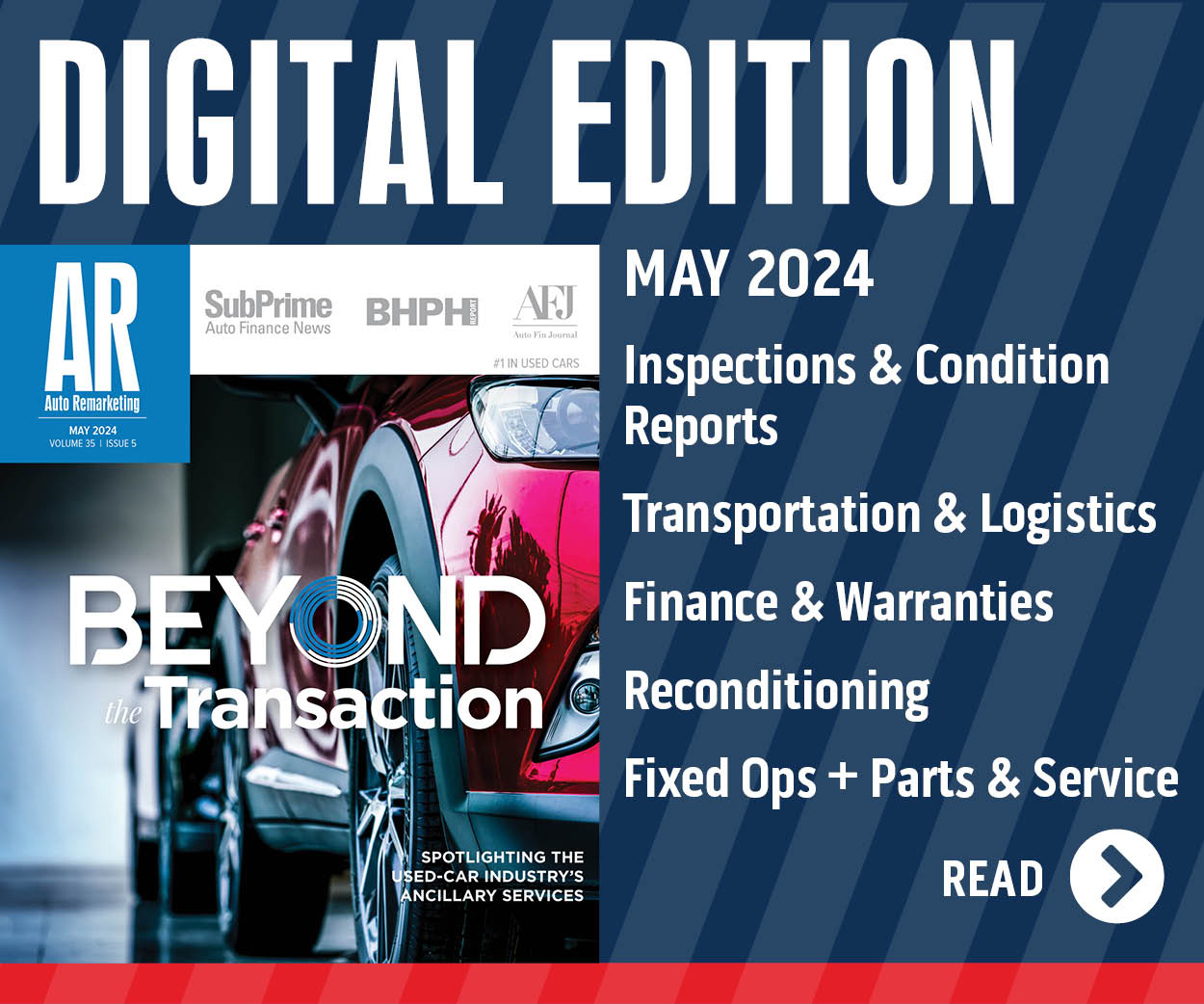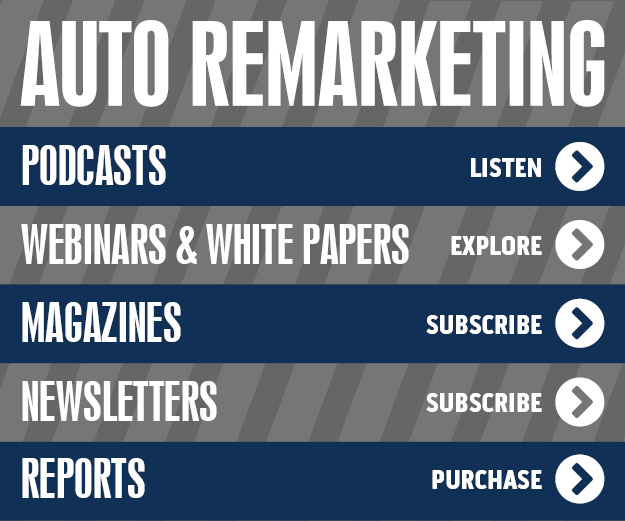COMMENTARY: From 100 square feet to sales success

Expo hall at Used Car Week 2022 in San Diego. Photo by Jonathan Fredin.
Trade shows can offer businesses the single best form of marketing: one-on-one contact in a highly charged selling atmosphere. Combine that with music, entertainment, and maybe a little caffeine (or alcohol), and you have the opportunity to close a lot of business.
Your actual booth space is a key component in that success. No matter the size or location of your booth, treat this piece of real estate as your own personal storefront. It’s your chance to convey your goals and brand in a physical space — which has never been more important than today with our remote workforce and Zoom conference calls.
Many trade shows allow you to provide a custom booth experience. As you plan for these, details can cause confusion and cost. Let’s look at it from a high level.
Goals will drive layout
Before you begin to design your booth, think about what your team needs to accomplish. Will you be scheduling meetings at the booth? Do you need multiple ways to show your product? Is your product physical or online? And, what will your budget allow?
Example 1: The business goal is to sign as many contracts onsite as possible, with working deals and new ones. In this scenario, you need a space that is comfortable and professional enough for customers and staff to review contracts, sign them and store them. Make sure you have a table and real chairs. High tables can work in a small booth, as long as your chairs have backs. Larger booth spaces can hold multiple sitting/desk areas, and maybe even meeting rooms. Ensure you have a private, secure storage area for all important business documents.
Example 2: The business goal is to showcase a new software product, cultivate new leads and set appointments for follow-ups. In this case, you need demo stations. The ideal scenario is likely a large screen and viewing area where multiple people can gather. Again, large booths can accommodate multiple demo areas. In a small booth, an option may be to provide handheld devices for brief demonstrations when the primary demo area is in use. Either way, internet and power must be carefully planned for the right spots in the booth.
Brand will drive design
Once you settle on a basic layout, begin the design work. Business goals will influence the design especially when new products are being launched. But, this is the realm of the brand owner. Consider the impact you want your prospects and customers to have when they see your booth. Will they recognize you and your brand? Is the booth welcoming?
Are your graphics easy to read and understand? With any-sized booth, less is more. Do not try to cram every feature and benefit on your graphics. No one will read it. Keep it high-level and polished. You want to attract people to approach so that your team can do the talking – and the listening.
Make every inch count
Even if you have a 10,000-square-foot booth, every inch needs to be considered. The vast majority of trade show booths are 10×10 shoeboxes where there is barely enough room for a backdrop and table, much less chairs. With the right planning and exhibit company, you can make a 10×10 do the work of a much larger booth. Incorporate full-scale graphics and/or video to make your booth stand out.
Create a welcoming area with a simple counter. Use that to store all of your promotional items and contracts. In a larger booth, pay attention to every surface. Determine which areas need design and which need to be clean and clear. You need both. And padding. Carpet color will never be noticed — unless you get white and promptly spill coffee on it. But deep padding will be noticed and appreciated by your guests — and employees.
Surround sound branding
Once you have finalized your booth branding, use those design concepts in every detail possible — from signage to furniture, from staff attire to customized lanyards, from your pre-promotion to your onsite collateral, from your promotional items to continued onsite marketing. The more options you choose to display your unique brand, the more likely your customers will remember you.
Lions, tigers and bears. Oh my!
Trade shows can take on the appearance of a circus with the competing offers from exhibitors. From hawking caricature artists to open bars to magicians, exhibitors have done it all. Then there are the giveaways — office supplies, books signed by famous authors, expensive watches, and even cash.
But what will work to attract customers to your brand? There are no silver bullets or right answers. The incentive you provide should ideally match your goals and budget. Consult your sales team and try different options at different events to find what works best for you, your budget and your brand.
About the Author: Jennifer Sanford is an experienced SaaS marketing leader passionate about the retail automotive experience. Jennifer is the founder of Sanford Marketing Group, an agency specializing in B2B marketing strategy and project management. Jennifer has headed marketing teams for top automotive technology companies over the last 20 years. Her favorite onsite booth experience was hiring a sommelier to deliver wine tastings to booth guests.

 View The Latest Edition
View The Latest Edition

